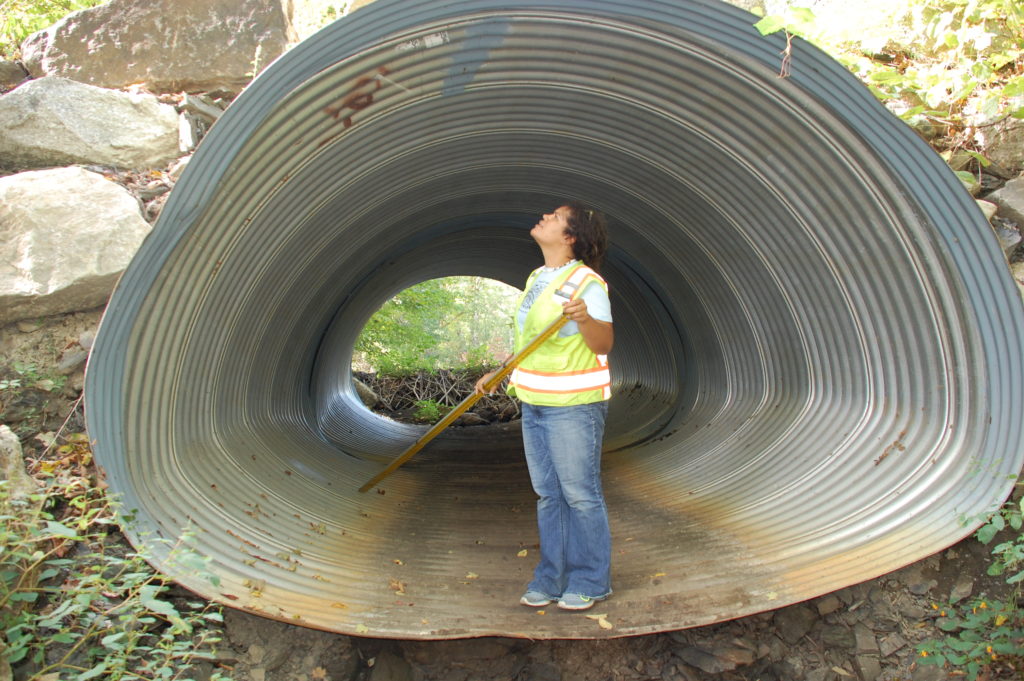Rushing water overtopping bridges and culverts threatens not only property and wildlife habitats, but also public safety.
More than 1,900 publicly owned road stream crossings in the Hudson River estuary watershed are too small to accommodate flood waters of a five-year storm. The Hudson River Estuary Program is likely to identify more undersized crossings as it continues to assess bridges and culverts in the watershed.

“We have a lot of data from assessments. Now we need more mitigation,” said NEIWPCC’s Megan Lung. She is one of the scientists assessing crossings for flow capacity and aquatic connectivity.
On June 1, New York State’s Department of Environmental Conservation awarded $206,000 to two flood-related endeavors. These projects will provide public works departments with site-specific recommendations and designs for right-sized replacement bridges and culverts.
The DEC’s Hudson River Estuary Program and NEIWPCC are administering the grants.
One of the grants went to Trout Unlimited, a nonprofit organization dedicated to conserving and restoring coldwater fisheries.
Trout Unlimited will work with two adjacent towns to identify and prioritize road-stream crossing replacement projects in the watershed of Roeliff Jansen Kill. The Kill is a major tributary to the Hudson River.
According to the DEC, “Priority will be given to inadequately sized culverts that threaten both community road infrastructure and the ability for fish and wildlife to move freely.”
The second grant went to the environmental engineering firm Tighe & Bond to develop a road-stream crossing management plan, conceptual designs, and one shovel-ready design for the town of Esopus.
The project will consider culverts under town and county jurisdiction. Lung said the biggest barriers to fish passage are sometimes on county roads; she said this project is notable for including both a town and a county in the process.
The DEC also announced a third grant on June 1 that will be managed by NEIWPCC staff at the Hudson River Estuary Program. The Rensselaer Plateau Alliance, which received the $110,000 grant, will identify and prioritize flood risks and make recommendations in the watershed of another Hudson River tributary, the Poesten Kill.
The watershed includes both rural and urban areas, including environmental justice areas in the City of Troy. The Alliance will work with multiple partners including engineering and design consultants. The final product will include cost-benefit analyses of all of the group’s recommendations.
These may include natural approaches such as stream, floodplain, and wetland restoration, as well as green infrastructure projects and improvements to traditional infrastructure.
iWR • July 2018